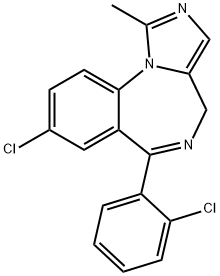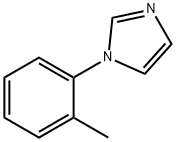Climazolam , 99% , 59467-77-5
PRODUCT Properties
| Boiling point: | 522.7±60.0 °C(Predicted) |
| Density | 1.38±0.1 g/cm3(Predicted) |
| pka | 6.05±0.40(Predicted) |
| InChI | InChI=1S/C18H13Cl2N3/c1-11-21-9-13-10-22-18(14-4-2-3-5-16(14)20)15-8-12(19)6-7-17(15)23(11)13/h2-9H,10H2,1H3 |
| InChIKey | CHCISLOJADQUNQ-UHFFFAOYSA-N |
| SMILES | N12C(C)=NC=C1CN=C(C1=CC=CC=C1Cl)C1=CC(Cl)=CC=C12 |
Description and Uses
Climazolam is a potent benzodiazepine which, following IV administration, has a very rapid onset of effect. It has a marketing authorization in Switzerland for use in dogs, but has been used in a wide variety of animals including cattle, sheep, horses and dogs (Rehm & Schatzmann, 1984). It is used as part of anaesthetic combinations. It is particularly effective for use with ketamine and, in horses, this combination has been used by constant rate infusion (CRI) to produce total intravenous anaesthesia (TIVA), the climazolam being reversed with sarmazenil (see below) at the end of surgery to produce a rapid recovery (BettschartWolfensberger et al., 1996). Climazolam (1.0–1.5 mg/kg) has also been used in combination with fentanyl (0.005–0.015 mg/kg) for anaesthesia in the dog (Erhardt et al., 1986).
Climazolam (Ro21-3982) was introduced under licence as a veterinary medicine by the Swiss Pharmaceutical company Gr?ub under the tradename Climasol. Climazolam is a benzodiazepine, specifically an imidazobenzodiazepine derivative developed by Hoffman-LaRoche. It is similar in structure to midazolam and diclazepam and is used in veterinary medicine for anesthetizing animals.




